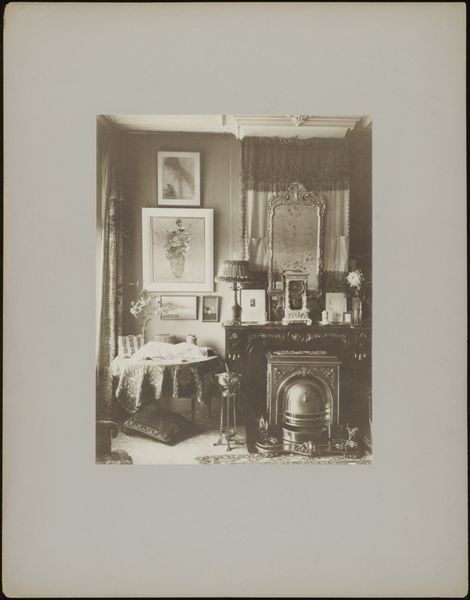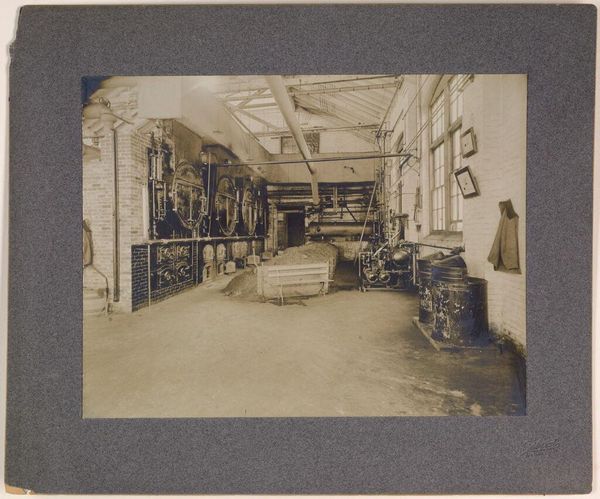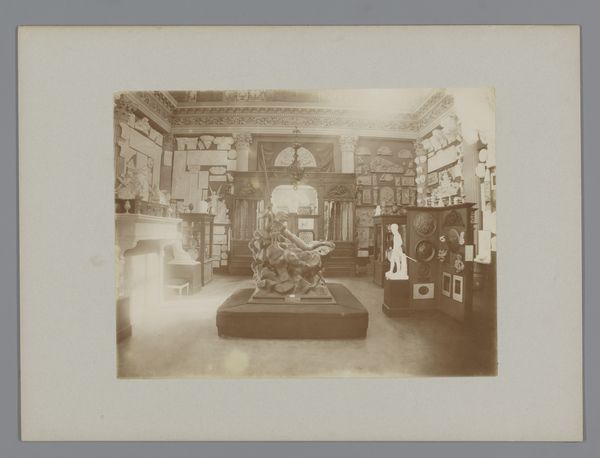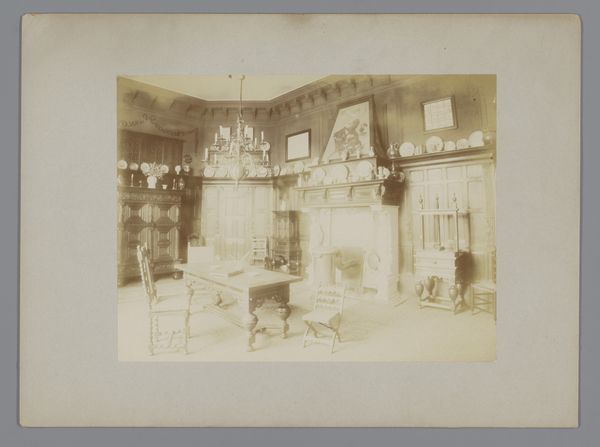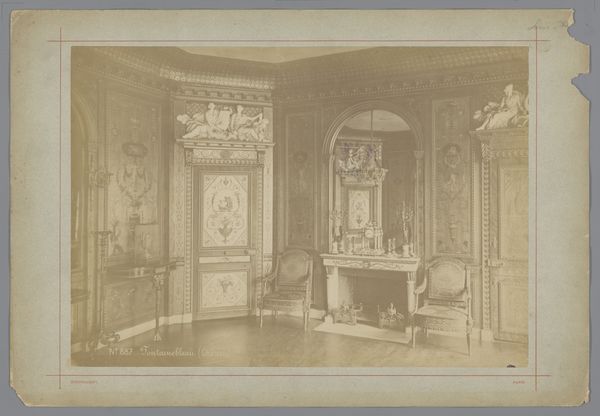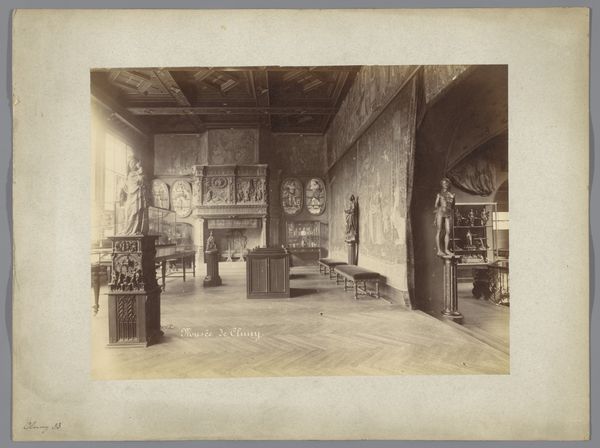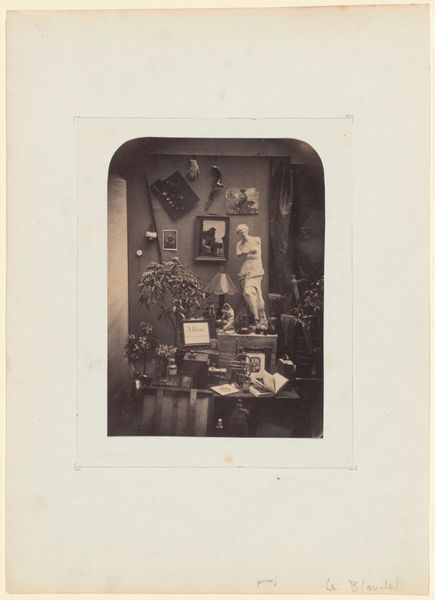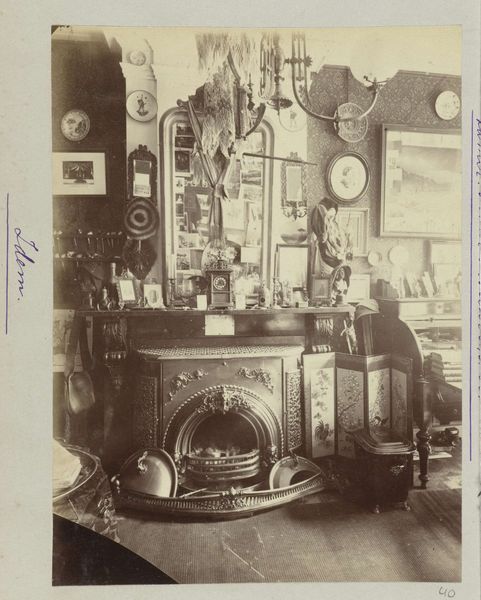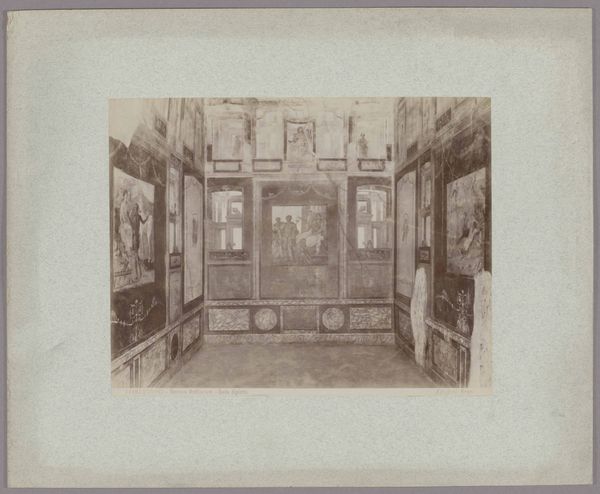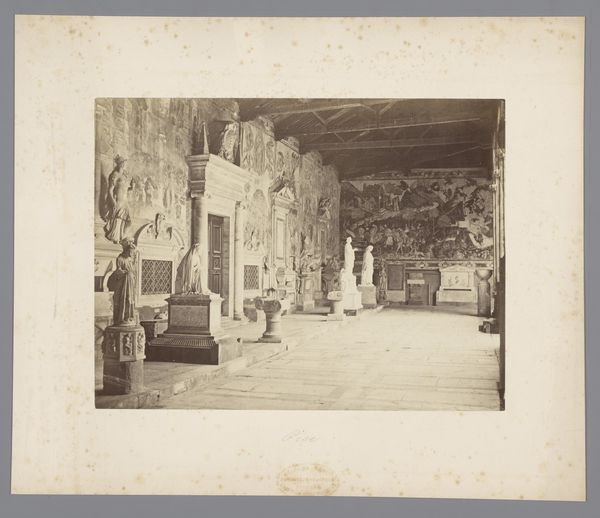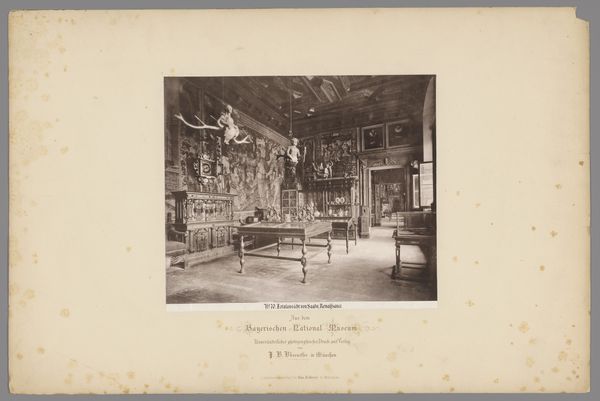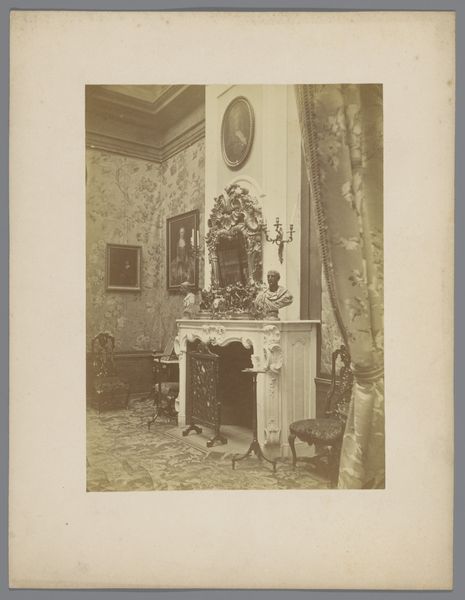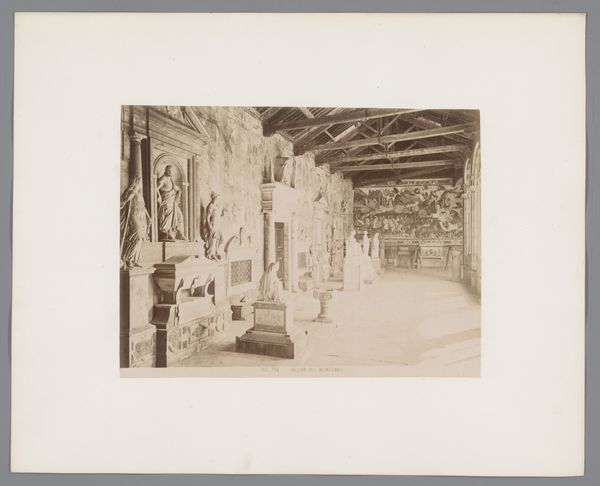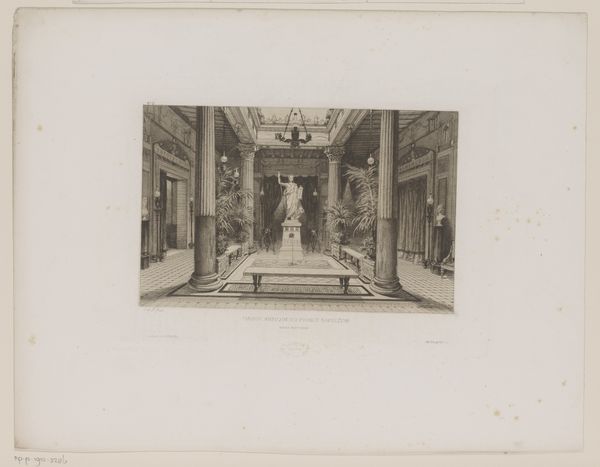
photography
#
photography
#
genre-painting
Dimensions: height 166 mm, width 220 mm
Copyright: Rijks Museum: Open Domain
Curator: Standing before us is an evocative genre scene captured in a photograph titled "Interieur," created around 1890-1900 by Johann Pörtzgen. Editor: My first thought? It’s utter sensory overload. Every inch seems packed with stuff—a deliberate accumulation, or maybe just… years of living? It’s almost suffocating but fascinating. Curator: Precisely. What you're sensing, I believe, reflects the rise of bourgeois culture and its penchant for display. Look closely at the ornate details of everyday life turned art: collections of plates and objets d'art crowding shelves, fabrics draped lavishly, mirroring and distorting, transforming personal space into theatrical spectacle. It shows an ambition for things, doesn't it? Editor: Ambition is one word for it! It certainly suggests a new form of material comfort trickling down but, crucially, accessible as a photo! This reproduction makes it broadly consumable in ways this cluttered, lived-in space never could be in reality. I mean, think about how the act of photographing transforms a private world into something almost…public? Curator: Absolutely. And that act changes everything. It's not just recording reality, it's manufacturing an idea of aspiration. Consider the light – carefully managed – playing across these meticulously placed items. It hints at something more than mere possessions, hinting at a constructed dreamscape or emotional interior. Editor: It is a skillful image and that dreamscape is, indeed, manufactured through technical manipulation – how do you control light within that pre-flashbulb era studio or domestic setting? Through lengthy exposure times? Retouching? Perhaps both… the point being, materiality itself can manifest the unreality the picture projects. Curator: Indeed, but look at the mirroring—a visual doubling that speaks to interiority, but it might signify self-awareness and even, perhaps, anxiety surrounding appearance and identity amid such burgeoning consumerism. The material possessions become a reflection of self. Editor: And even photography itself, mass producible and, often, affordable is, here, revealed to be yet another material object displayed within someone's home, almost an infinite mirroring of the image within an image! A closed, but self-replicating ecosystem. Curator: A veritable vortex! Thanks to these layers—production techniques, aspirational spaces, reflective identity and materiality —we grasp more than just décor in this space. We catch an entire historical epoch caught between longing, materiality, and manufactured desire. Editor: Precisely, what seemed initially as overwhelming clutter unravels to reveal complex conversations about consumerism, labour, photographic practices and production— and a whole new way to consider what an "interior" actually means.
Comments
No comments
Be the first to comment and join the conversation on the ultimate creative platform.
